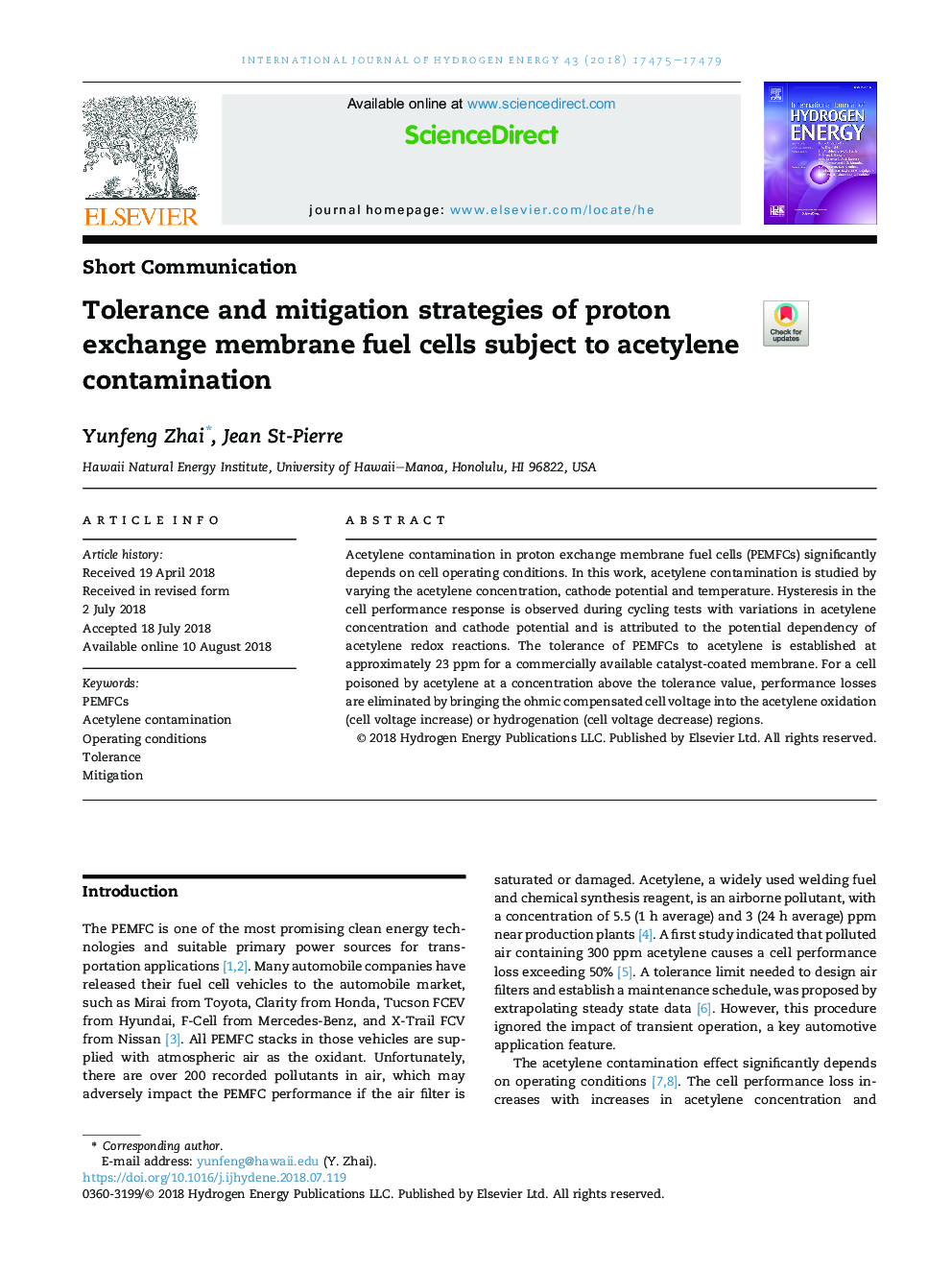| Article ID | Journal | Published Year | Pages | File Type |
|---|---|---|---|---|
| 8948285 | International Journal of Hydrogen Energy | 2018 | 5 Pages |
Abstract
Acetylene contamination in proton exchange membrane fuel cells (PEMFCs) significantly depends on cell operating conditions. In this work, acetylene contamination is studied by varying the acetylene concentration, cathode potential and temperature. Hysteresis in the cell performance response is observed during cycling tests with variations in acetylene concentration and cathode potential and is attributed to the potential dependency of acetylene redox reactions. The tolerance of PEMFCs to acetylene is established at approximately 23Â ppm for a commercially available catalyst-coated membrane. For a cell poisoned by acetylene at a concentration above the tolerance value, performance losses are eliminated by bringing the ohmic compensated cell voltage into the acetylene oxidation (cell voltage increase) or hydrogenation (cell voltage decrease) regions.
Related Topics
Physical Sciences and Engineering
Chemistry
Electrochemistry
Authors
Yunfeng Zhai, Jean St-Pierre,
